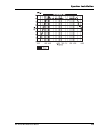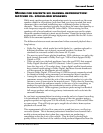
Surround Sound
M1 Active Mk2 Reference Manual 31
CHAPTER 3
SURROUND SOUND
ABOUT SURROUND SOUND
Surround sound is the term used for several different systems which use
multiple channels of playback in the listening room to recreate a truly three-
dimensional sound experience. The practice of recording music-only in
surround sound is a fairly recent innovation. Surround sound for video,
however, has been around for over ten years. With modern encoding
methods, multichannel audio may be delivered to consumers on standard
video tape, video discs, and even through broadcast, with the proper encoders
(devices which take multiple channels of audio and combine them into two
channels) and decoders (used at the receiving end to split the signal back into
multiple channels).
Systems are in use which use three (left, right, and surround), five (left,
center, right, left surround, right surround, often supplemented by a sixth
subwoofer channel), and more speakers. The original Dolby Surround of
the mid-eighties was a matrixed three-channel-only system. It had left, right
and a mono surround (rear) track, which was usually played through two
surround speakers. In 1987, Dolby Pro Logic, a four-channel matrix system,
was introduced. Pro Logic added a dedicated center channel to which most
dialog was assigned. The rear surround channel was still in mono. In 1996,
Dolby Digital (AC-3) and DTS, fully discrete six-channel audio delivery
platforms with separate left-rear and right-rear channels first became
available to consumers on laserdisc and, more recently, on DVD (Digital
Versatile Disc).
With so many listeners hearing music through their multimedia systems, it is
important for engineers to produce music on surround systems, even if
they’re not working for film or video applications. Powered monitors like the
Alesis M1 Active Mk2 Biamplified Reference Monitor have proven to be a
simple, cost-effective way to add five-channel surround to control rooms.


















